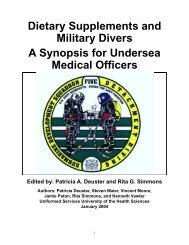Force Health Protection: Nutrition and Exercise Resource Manual
Force Health Protection: Nutrition and Exercise Resource Manual
Force Health Protection: Nutrition and Exercise Resource Manual
You also want an ePaper? Increase the reach of your titles
YUMPU automatically turns print PDFs into web optimized ePapers that Google loves.
What is Physical Fitness?<br />
What does it mean to be physically fit? The American<br />
College of Sports Medicine (ACSM) has defined physical<br />
fitness as a set of characteristics (i.e., the work capacity<br />
of your heart <strong>and</strong> lungs, the strength <strong>and</strong> endurance of<br />
your muscles, <strong>and</strong> the flexibility of your joints) that<br />
relate to your ability to perform physical activities.<br />
Regular physical activity leads to improved physical<br />
fitness <strong>and</strong> many other physiologic, cosmetic, <strong>and</strong> psychological benefits.<br />
Depending on personal goals <strong>and</strong> job requirements the level of physical<br />
fitness to attain can range from basic, health-related to more specific,<br />
performance-related fitness (Figure 4-1).<br />
Figure 4-1. The Fitness Continuum<br />
<strong>Health</strong>-related<br />
General<br />
Performancerelated<br />
Lowers stress,<br />
increases metabolism,<br />
promotes health,<br />
prevents disease.<br />
FITT Principle<br />
Increases muscle <strong>and</strong> heart<br />
<strong>and</strong> lung fitness, leads to a<br />
healthy body composition,<br />
improves flexibility. Most<br />
Navy personnel are in this<br />
category.<br />
Enhances specific physical<br />
tasks or skills. For Navy<br />
personnel who perform<br />
physically dem<strong>and</strong>ing tasks.<br />
Also, for people competing<br />
in organized sports.<br />
There are four basic components in all physical fitness programs. These<br />
are frequency of exercise, intensity of the exercise, time spent exercising, <strong>and</strong><br />
the type of activity. Each factor is essential in planning your exercise<br />
routines <strong>and</strong> will influence the extent of your training results. Therefore, to<br />
optimize training time, recommendations have been set for the different types<br />
of training (i.e., cardiorespiratory (heart <strong>and</strong> lung) <strong>and</strong> muscle fitness). These<br />
are outlined in the Physical Activity Pyramid in Figure 4-2 <strong>and</strong> are called<br />
the FITT Principle guidelines.<br />
FITT = Frequency, Intensity, Time & Type<br />
<strong>Nutrition</strong> <strong>and</strong> <strong>Exercise</strong> <strong>Resource</strong> <strong>Manual</strong> 29




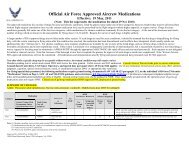

![Body Composition and Military [PDF] - Human Performance ...](https://img.yumpu.com/43269347/1/190x245/body-composition-and-military-pdf-human-performance-.jpg?quality=85)
![Tips for Grocery Shopping [PDF]](https://img.yumpu.com/37447379/1/190x245/tips-for-grocery-shopping-pdf.jpg?quality=85)
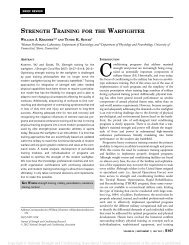
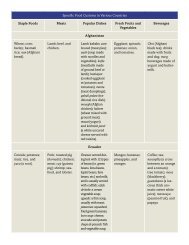
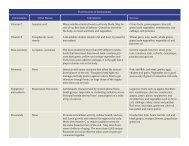
![Synthetic Drugs [PDF] - Human Performance Resource Center](https://img.yumpu.com/37447322/1/190x245/synthetic-drugs-pdf-human-performance-resource-center.jpg?quality=85)
